 Harry Wagner
.
January 01, 2024
.
Toyota
Harry Wagner
.
January 01, 2024
.
Toyota
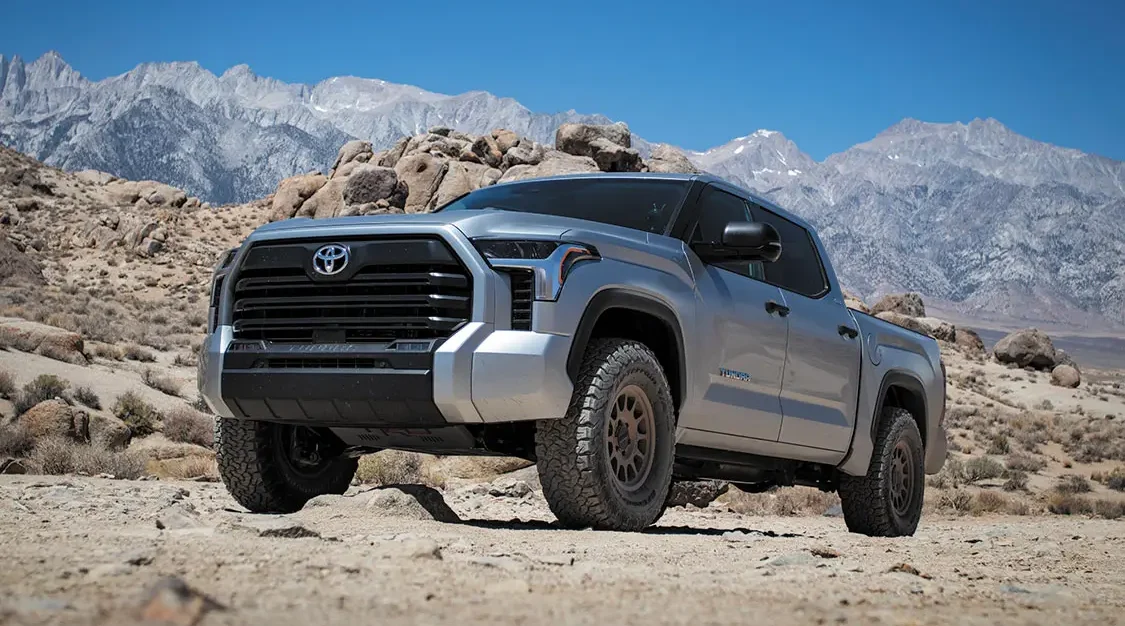
The 2007-2021 Toyota Tundra is one of the most popular vehicles for overland travel. It checks all the boxes with a reliable drivetrain, comfortable size, long production run, and plenty of aftermarket support. When Toyota announced that the Tundra would be redesigned for 2022, we wondered if it would live up to the Tundra name. Spoiler- it does.
The Second Generation Toyota Tundra had a production run of 15 years from 2007 to 2021, nearly unheard of in this day and age. The truck addressed US customers’ complaints that the First Generation Tundra was too small and underpowered with a big size increase, both for the body and for the engine, under the hood. Along the way, the Second Gen Tundra became a legendary overland vehicle for its reliability, payload capacity, and comfortable layout. Enthusiasts and aftermarket manufacturers alike embraced the platform, making them one of the most popular vehicles in the backcountry. So when Toyota announced the Third Generation Tundra, it had big shoes to fill. How does it measure up against the previous Tundra?
“The 2022 Tundra picks up where the last generation left off, with plenty of power and payload capacity now combined with a more modern suspension and interior.”
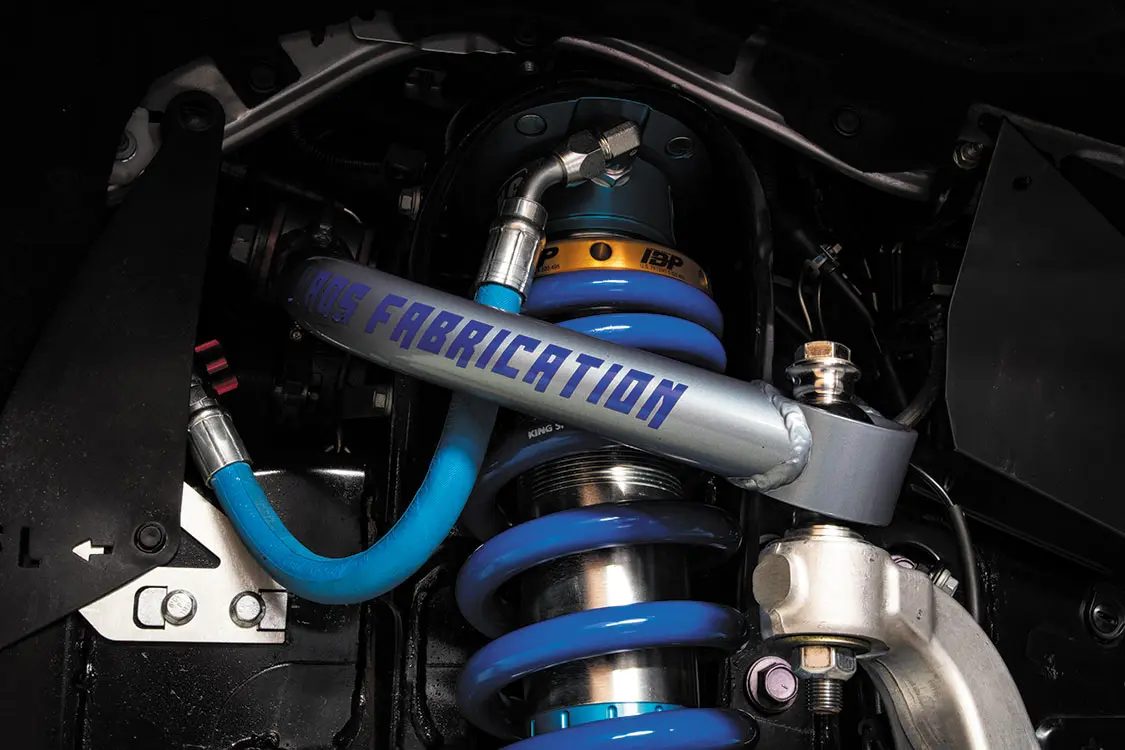
Total Chaos Fabrication was quick to get their hands on the new Tundra to develop new suspension products. The company is very familiar with the previous generation and offers upper control arms, lower control arms, King shocks tuned to their specifications, and more for the 2007-2021 Tundra. They didn’t waste any time in making similar products for the new Tundra. Their in-house truck has tubular upper control arms and chromoly plate lower control arms with 3-inch diameter King coilovers. The Total Chaos control arms use 1-inch uniballs that are significantly stronger and have a wider range of motion than the factory ball joints. The uniballs in the upper control arms allow for one inch of extra suspension travel when paired with the appropriate length coilovers. The King shocks fit that bill and are custom valved to Total Chaos’ specifications. They provide up to two inches of lift to fit 35-inch BFGoodrich All-Terrain KO2 tires, have internal bypass technology (IBP) to prevent harsh bottoming, and use compression adjuster knobs that allow the ride to be customized to the terrain and the driver’s preference.
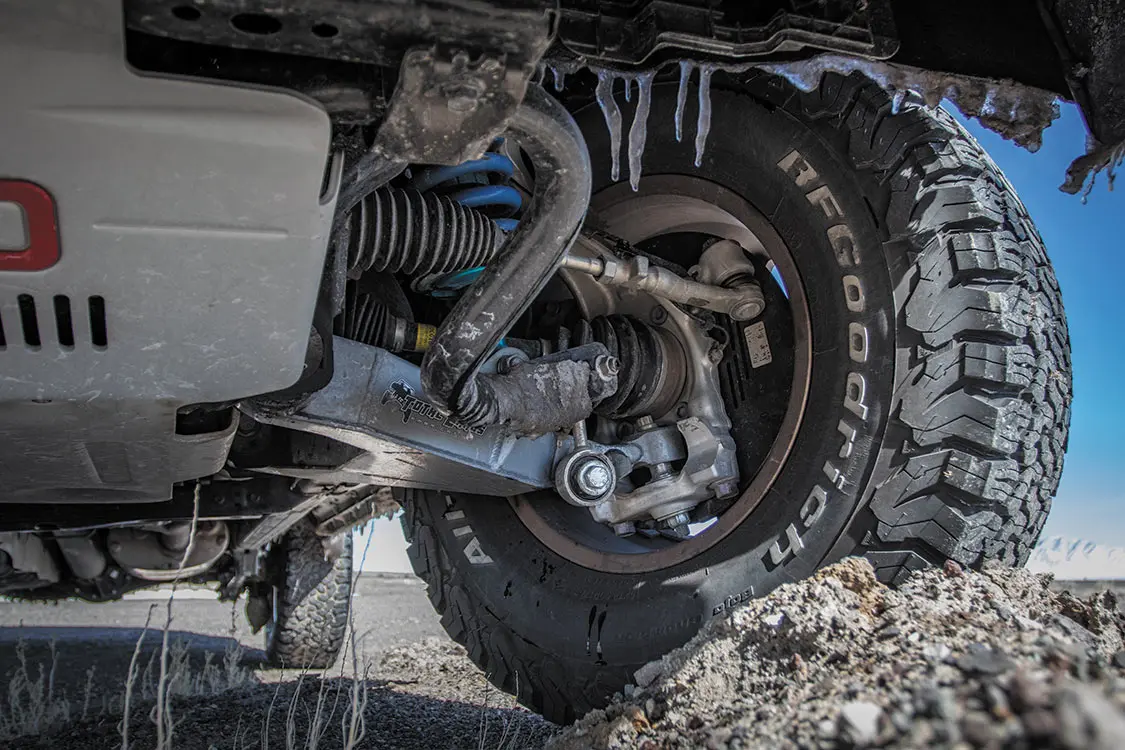
While the front suspension of the new Tundra is similar to the previous generation, the Third Generation ditched the rear leaf springs for coil springs, located by four control arms, and a track bar, similar to what you would find on a 4Runner or Land Cruiser. Factory rear coils retain the smooth ride and are paired with another set of King 3-inch diameter shocks with internal bypasses, compression adjusters, and custom valving. The factory control arms were replaced with Total Chaos chromoly links that feature urethane bushings at the axle end for better on and off-road control and handling. This kit allows you to firm up the ride and reduce some of the flex and vibration that is common with the factory rubber bushings. At the frame end, one-inch stainless steel uniballs are used to provide additional wheel travel. The links are adjustable to allow the wheelbase and pinion angle to be fine tuned for any ride height.
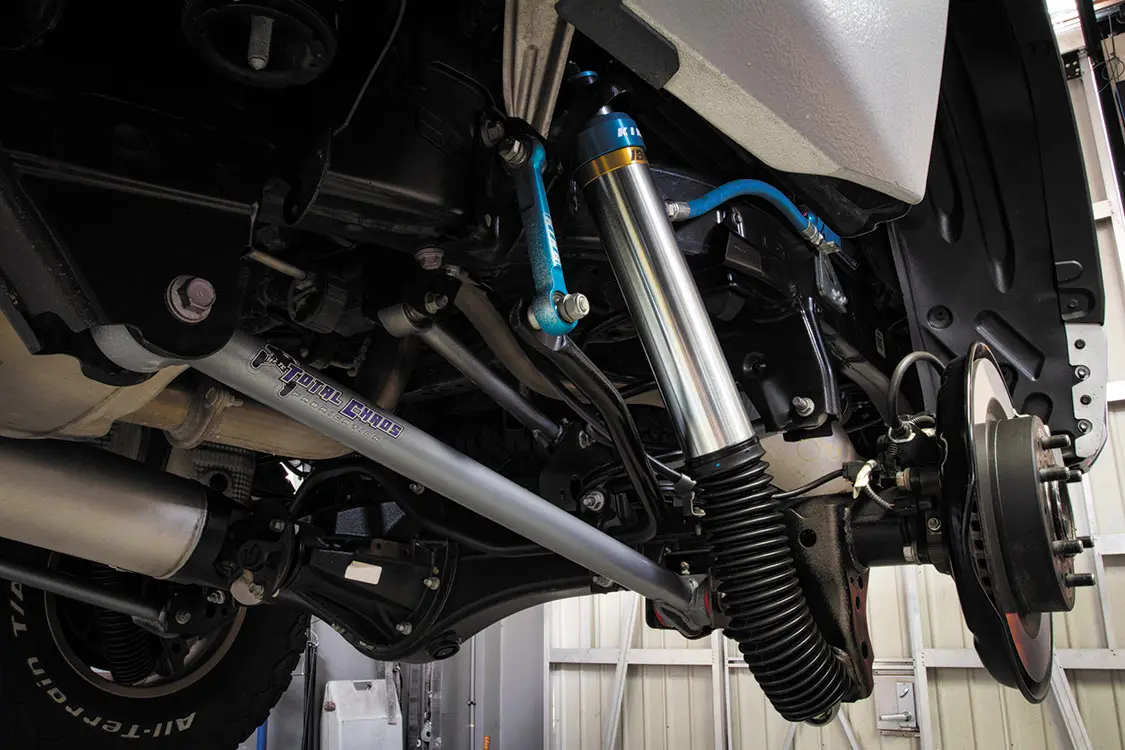
The 5.7L i-FORCE V8 engine used in the last generation Tundra made big power, but it had a reputation for being thirsty, particularly when larger tires and more weight were added to the vehicle. The new Tundra uses a 3.4L twin turbo V6 engine that makes similar horsepower but 20% more torque. The turbo engine is also backed by a ten-speed automatic transmission that has a lower first gear (4.92 versus 3.33) for more torque multiplication on the trail, and a taller overdrive (0.61 versus 0.73) that keeps the RPM down on the freeway and contributes to better fuel economy. Total Chaos has left the drivetrain in their new Tundra stock to maximize reliability.
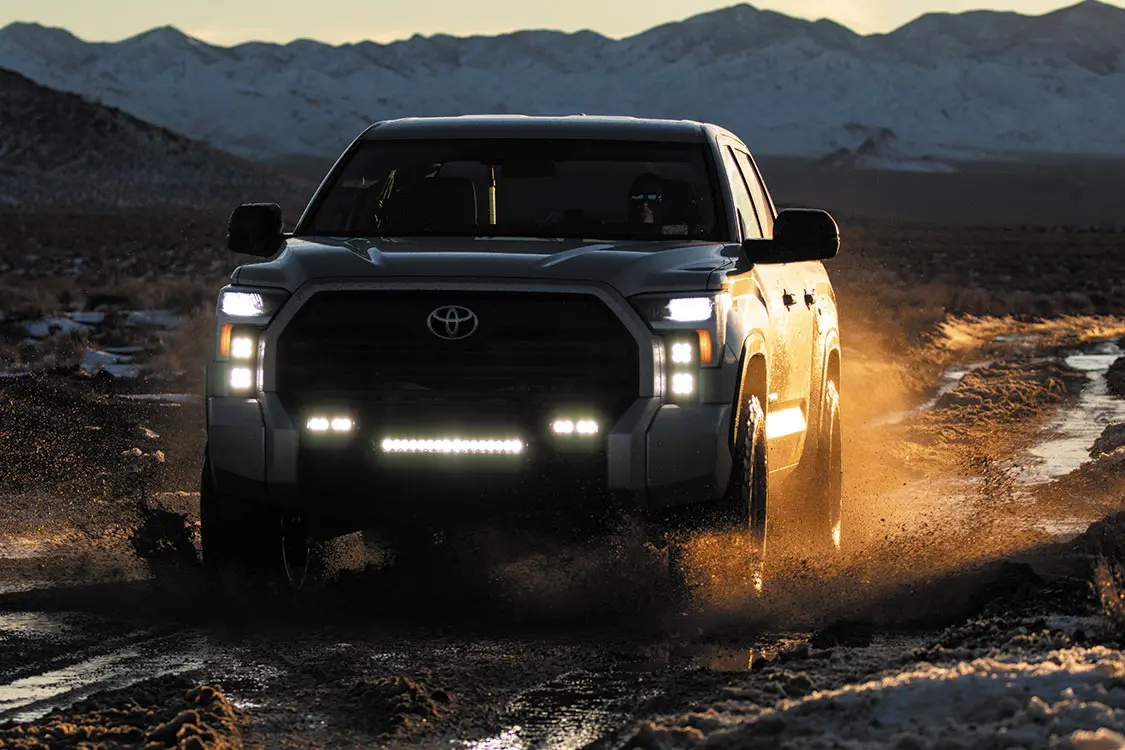
The front differential on the new Tundra is the same high pinion 9-inch ring gear and clamshell design as the previous generation, but the factory gear ratio is now way higher at 3.31 instead of 4.10. This is offset by the lower first gear in the transmission and aids in both strength of the pinion and in fuel economy. Interestingly, the ADD (auto differential disconnect) is performed in the differential on the new Tundra, rather than on the long side axle shaft. This makes us wonder if the system could be modified to function as a selectable front locker. Out back, the rear axle actually got smaller in the new Tundra, with a ring gear reduction from 10.5-inch to 9.5-inch. To put this in perspective, the venerable 14 Bolt rear axle that came in one ton trucks had a 10.5-inch ring gear, so it was considered overkill in the Tundra. The 9.5-inch axle is not new, though; it has been used in the 200 Series Land Cruiser for years and enjoys aftermarket support with several gearing and locking differential options.
Even though the wheelbase for the second and third generation Tundras is exactly the same (145.7/164.6 inches for shortbed/longbed), the length of the 2022 Tundra is 4.7 inches greater (233.6/252.5 inches for shortbed/longbed), and most of the length was added up front to accommodate the intercooler for the turbocharged engine. This has resulted in decreased approach angle (21 vs 26 degrees), but the Total Chaos suspension and 35-inch tall BFGoodrich tires remedied that issue. The new Tundra is only 0.3 inches wider than the previous model, and the track width increased by 0.5 inches. The cab height is two inches taller for increased head room, but the bed depth actually decreased by 1.1 inches. We see this as a trade off, the shallower bed makes it easier to access items over the side, but it is tougher to fit cargo under a tonneau cover. One of the biggest complaints about the new Tundra is the turning radius, which is 10% worse than the Second Gen Tundra (48.6 feet versus 44 feet).
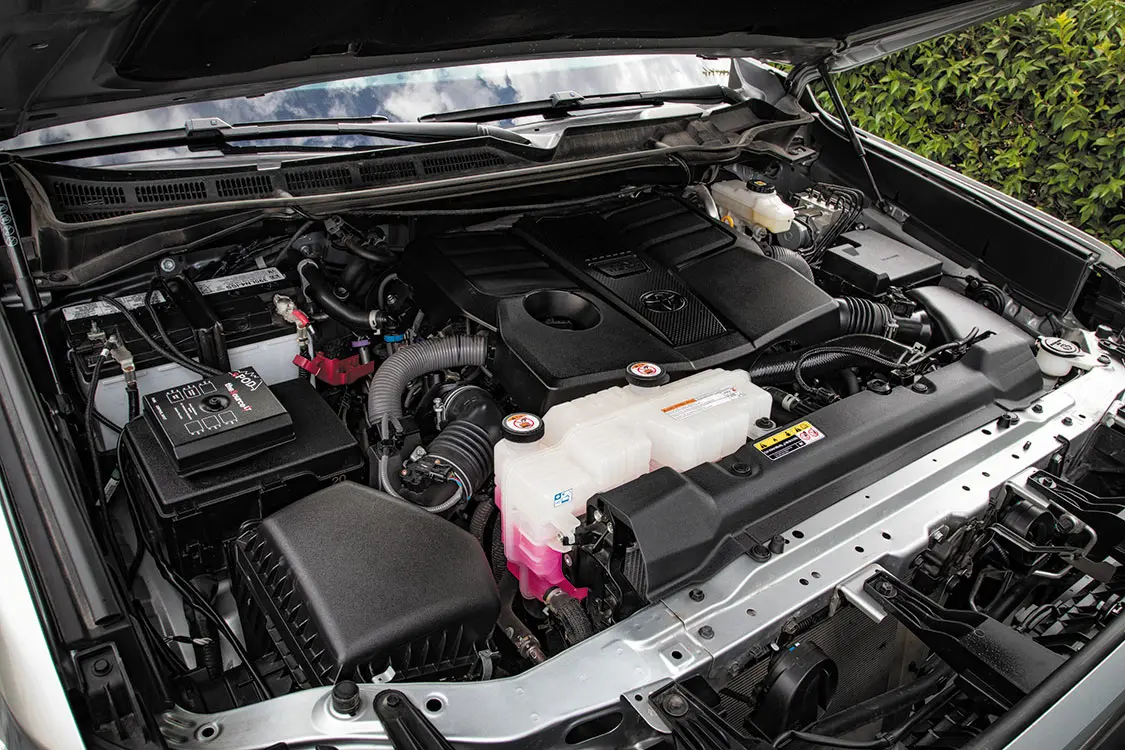
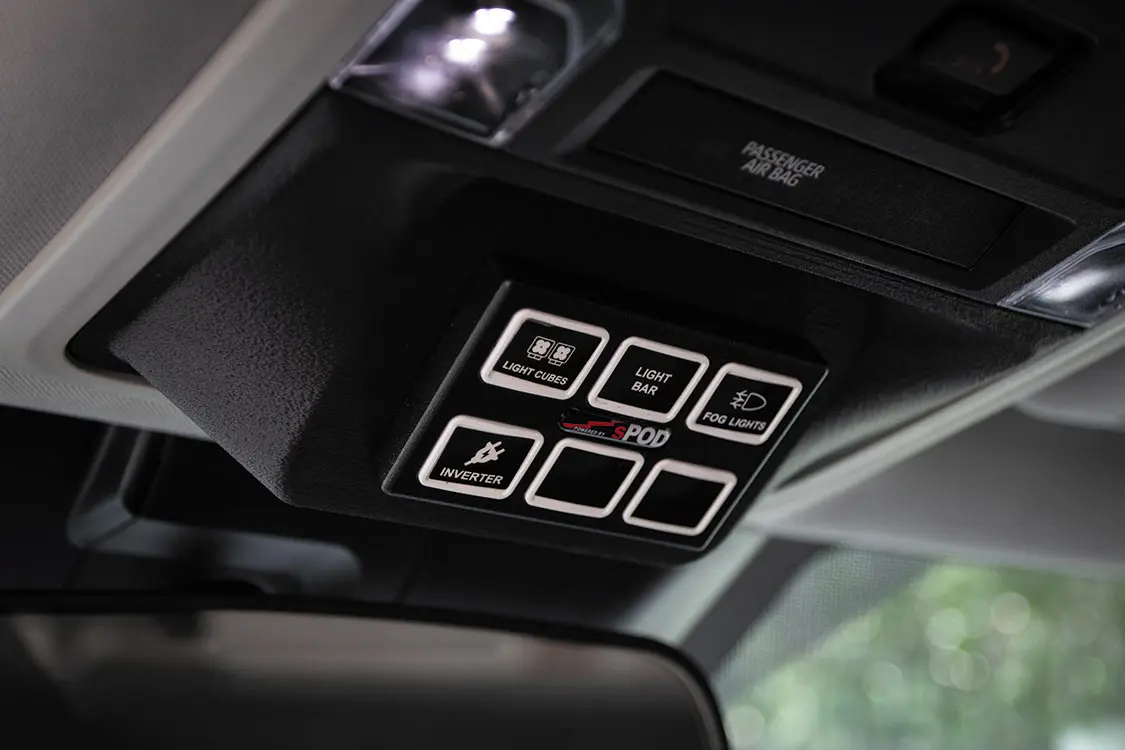
The first thing that you notice on the Third Gen Tundra is the giant grill, which people either love or hate. A taller stance and larger tires definitely balance the look of the grill, and some owners have added an aftermarket bumper to improve approach angle and make the bumper look smaller. As noted above, dimensions are pretty close to the previous generation truck, and we are grateful for the large wheel well openings that allow for fitment of larger tires without the need to chop the cab mount.
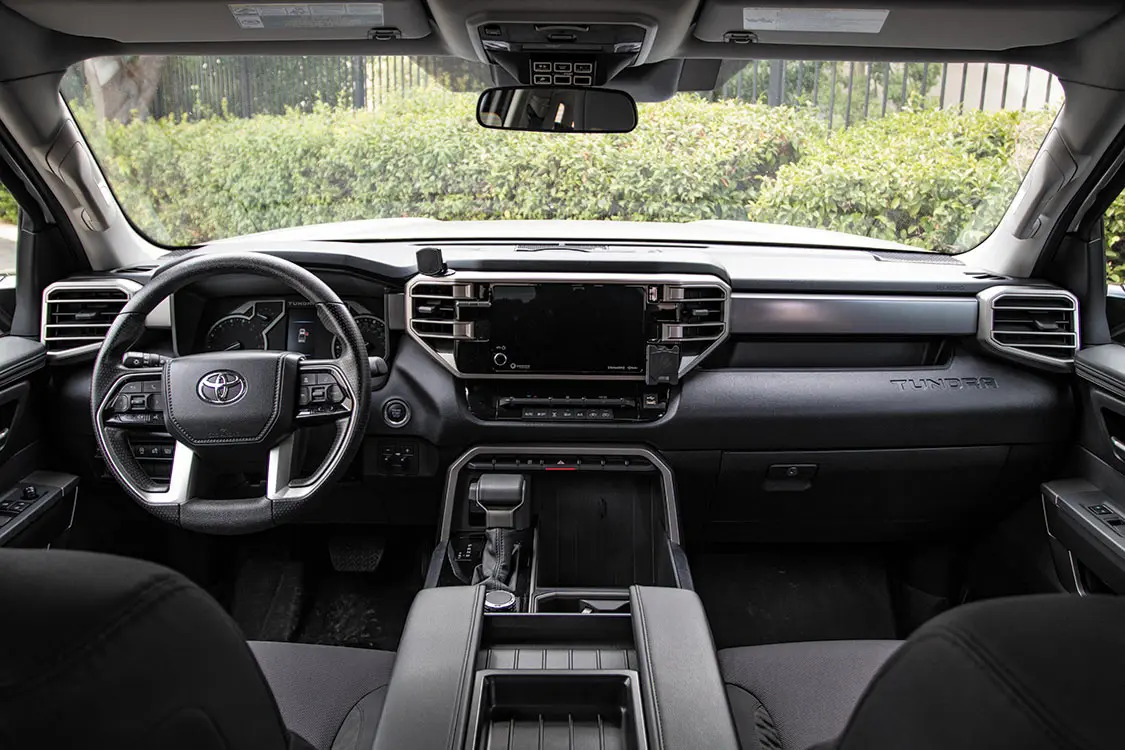
The new Tundra shares very few components with the previous generation pickup, inside and out. Seat comfort and interior noise levels are vastly improved, and the Tundra is a pleasant truck for covering long distances for both front and rear passengers. The new Tundra is available in SR, SR5, Limited, Platinum, 1794, and TRD Pro trims, and each is differentiated by unique interior details. The SR and SR5 have rugged appearances, whereas Limited and Platinum get more refined looks. The 1794 is the most luxurious, while the TRD Pro is off-road oriented. The upgraded touchscreen is loaded with a high-resolution display and brings quicker responses to user inputs, and the wireless Apple CarPlay integration is really useful.
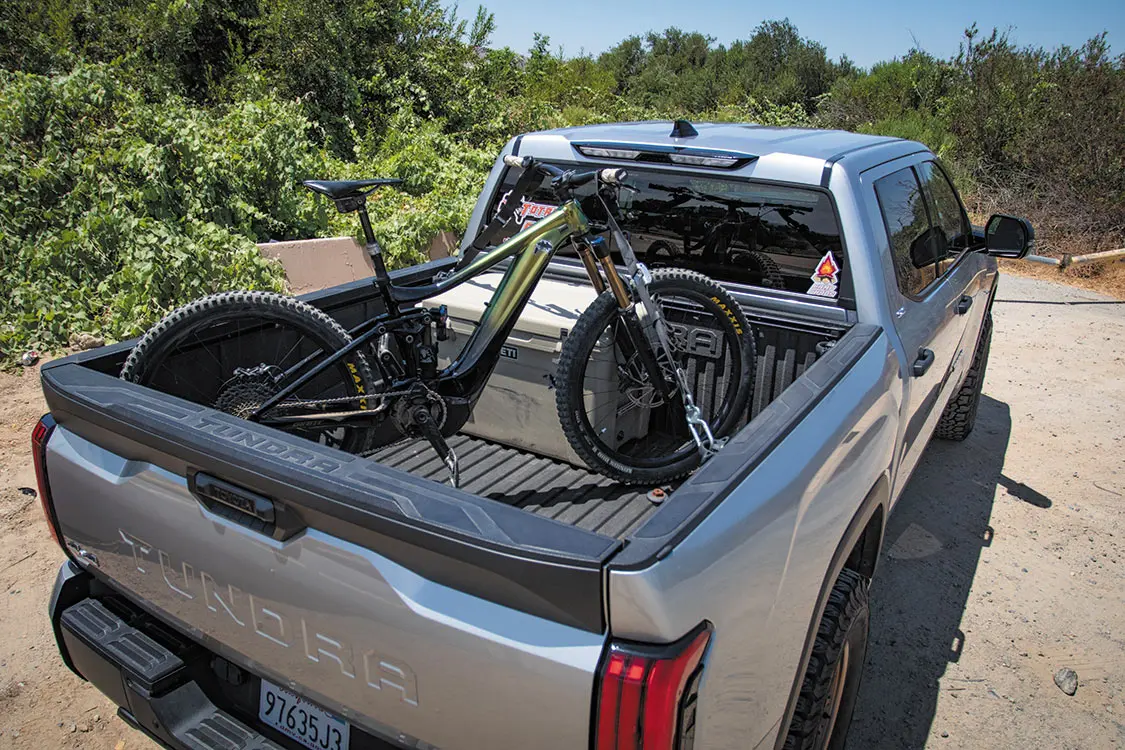
Only time will tell if the new Third Generation Tundra will live up to the reputation of its predecessor, but we already know that these trucks are powerful, capable, and the aftermarket has been quick to embrace them with options for the suspension and accessories such as bumpers, wheels, bed racks, and more. As dealers catch up with demand we expect to see more new Tundras on the trails in the near future.
“Total Chaos has built a Tundra that builds upon the truck’s strengths without completely changing the feel of the vehicle. This is the suspension that new Tundras should come with from the factory.”
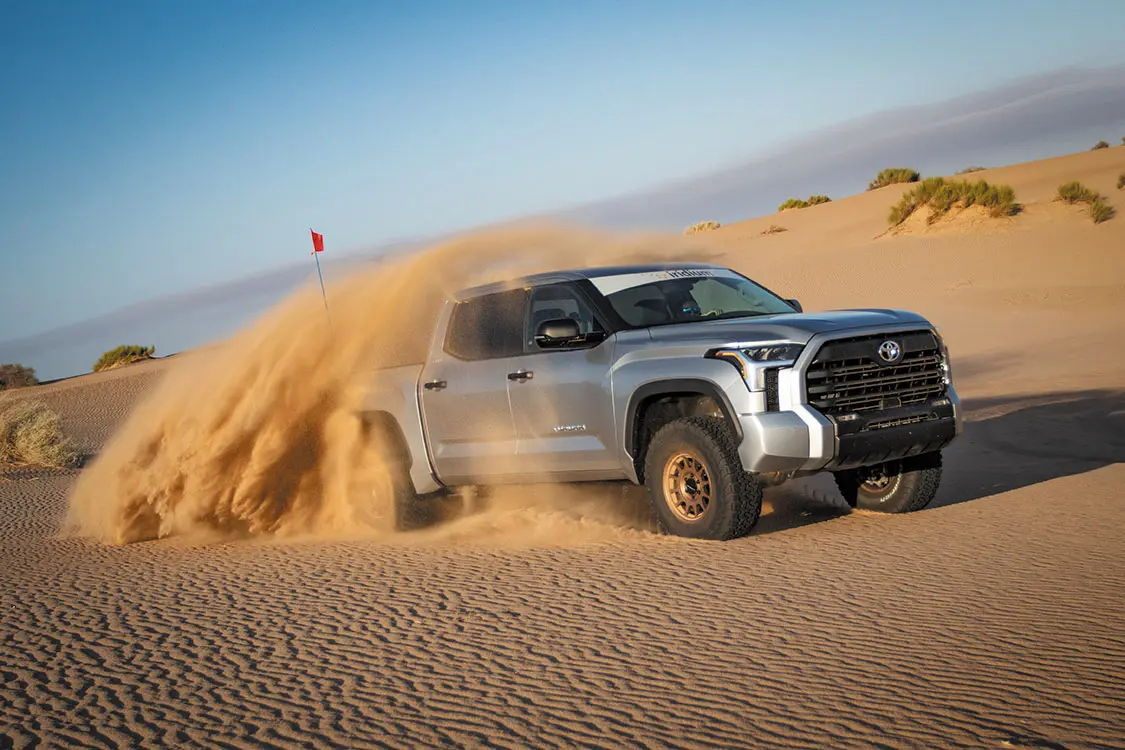
2022 Toyota Tundra
Engine: 3.4L Twin-Turbo V6
Suspension: Total Chaos upper and lower control arms, 3.0 King IBP coilover shocks (front), Total Chaos suspension links, factory coil springs, King 3.0 bypass shocks (rear)
Wheels & Tires: 35×12.50R17 BFGoodrich All-Terrain KO2s on 17×8.5 Method 703 Trail Series wheels
Armor: Factory TRD skid plate
Interior Accessories: SPOD switches
Exterior Accessories: Baja Designs S8, Squadron, and S2 lights
Editor’s Note: A version of this article appeared in TREAD Nov/Dec 2023.
We use cookies to enhance your browsing experience, serve personalized ads or content, and analyze our traffic. By clicking "Accept All", you consent to our use of cookies. Visit our Cookie Policy for more info.
Notifications
Share Link